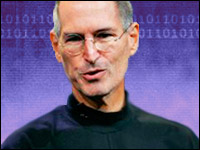
This story was originally published on Oct. 11, 2011, and is brought to you today as part of our Best of ECT News series.
Given the sheer volume of commentaries following the death of Apple founder Steve Jobs, I hesitated to add my own voice to the chorus. Like most folks, I didn’t know Jobs personally. Like many, the closest I ever got to him was by being in the audience during his Macworld keynotes, including the memorable 1999 introduction of the candy-colored Apple iMac G3.
A lot of verbiage has been slung about Jobs’ charisma and leadership qualities, but I haven’t read much about his PT Barnum-like ability to work a crowd. That’s part of many IT CEOs’ resumes but few, if any, were Jobs’ equals. Steve Ballmer’s pre-gravitas Monkey Boy antics were more spectacle than spectacular. While Oracle’s Larry Ellison and former Sun CEO Scott McNealy get points for eliciting controversy, their recent antics have been a bit more testily narcissistic than seems entirely healthy.
My own experience with Apple was almost entirely Jobs-less. I bought my first computer — a Macintosh SE 20 — a year or so after his 1985 ouster by Apple’s board. Though I was a dedicated Mac user for well-over a decade, I left Apple behind a couple of years after Jobs was officially reinstated as its chief executive in 1997.
The Pivotal Deal
Some of the issues that led me to the company in the first place inform why I haven’t returned. I got interested in personal computing before I became interested in technology, and I used my Mac SE 20 almost entirely as a word processor. I’d tried using PCs, but the arcane command and file structures seemed more of a hindrance than a help to my writing.
In contrast, the Mac was a revelation that fully deserved its “the computer for the rest of us” sobriquet. Quite simply, it worked — and I can’t think of any higher praise for commercial technology products.
After several years of being employed as a writer in Silicon Valley, I got my first analyst job with a company that was decidedly pro-Windows (not surprising, since Microsoft was a major client). Splitting time between Windows at work and the Mac at home was somewhat painful until the arrival of beta versions of Windows XP arrived at our office in 2000.
XP benefited hugely from cross-licensing deals between Microsoft and Apple, allowing the former to emulate (or steal, depending on your viewpoint) key portions of the latter’s world-class GUI. While XP still wasn’t nearly as elegant as the Mac OS (particularly OS X, with whose release it coincided), it was orders of magnitude more user-friendly than previous versions of Windows.
Windows XP and Apple OS X marked a couple of turning points. Personally, XP’s ease of use led to my shifting entirely away from Macs to less costly Wintel machines, but that was small potatoes. XP also allowed Microsoft to sew up its leadership in traditional personal computing, and XP became the dominant PC OS for generations of users (many of whom continue to resist migration to successor Windows OS platforms).
Though OS X was the first Apple OS to integrate IP from Jobs’ Unix-based NeXT venture, its arrival found Jobs turning his attention to areas beyond the company’s traditional personal markets. I expect this was largely a practical issue. Having traded or given away its signature GUI to Microsoft, there was no way Apple could fully compete against the price/performance benefits of Windows-based systems.
Putting the Personal in PC
However, being forced to live with the mistakes and missteps of previous Apple executives effectively led Jobs in new directions. These included an increasing focus on elegant — even radical — hardware designs, including the aforementioned all-in-one iMac G3, the stunning iMac G4 Cube, the iBook and MacBook laptops, and many more. But Apple’s sweetest eye candy was increasingly found in new low cost/high margin products and mobile form factors, including the iPod, the iPhone and, most recently, the iPad.
The lesson here goes well beyond “when life gives you lemons, make lemonade.” With the Mac, Jobs, Steve Wozniak and Apple had wrested technology out of the hands of technologists and effectively personalized personal computing. Jobs’ talent — or genius — was in realizing how that model could be applied to new classes and future generations of digital products.
By keeping that lesson in mind, Apple’s loss of its signature GUI and other technologies didn’t lead the company into a dead end but instead allowed Jobs to drive Apple onto an open road toward entirely new destinations.






















































Social Media
See all Social Media